Ginataang seafood is loaded with crab, mussels, shrimp, and squid for the ultimate seafood lover's dream! It's creamy, spicy, and delicious with steamed rice!
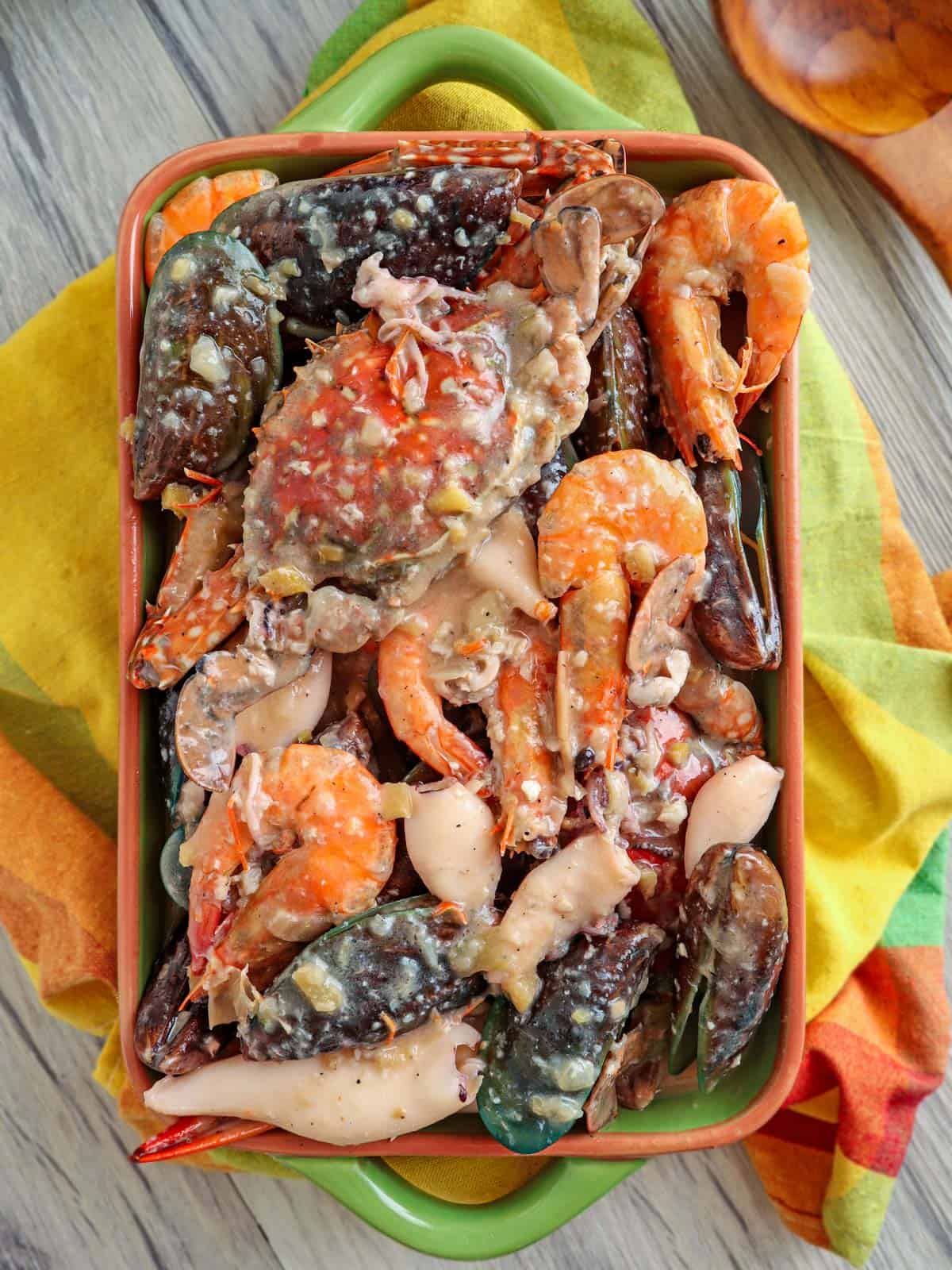
Ginataang seafood is one of my mother's signature dishes. It's been a staple in many of our family parties and potlucks over the years, along with her shrimp with oyster sauce and sipo egg.
This seafood extravaganza is always a favorite at the buffet table and is usually the first thing guests beeline for. Not surprising as it's finger-licking, lip-smacking delicious!
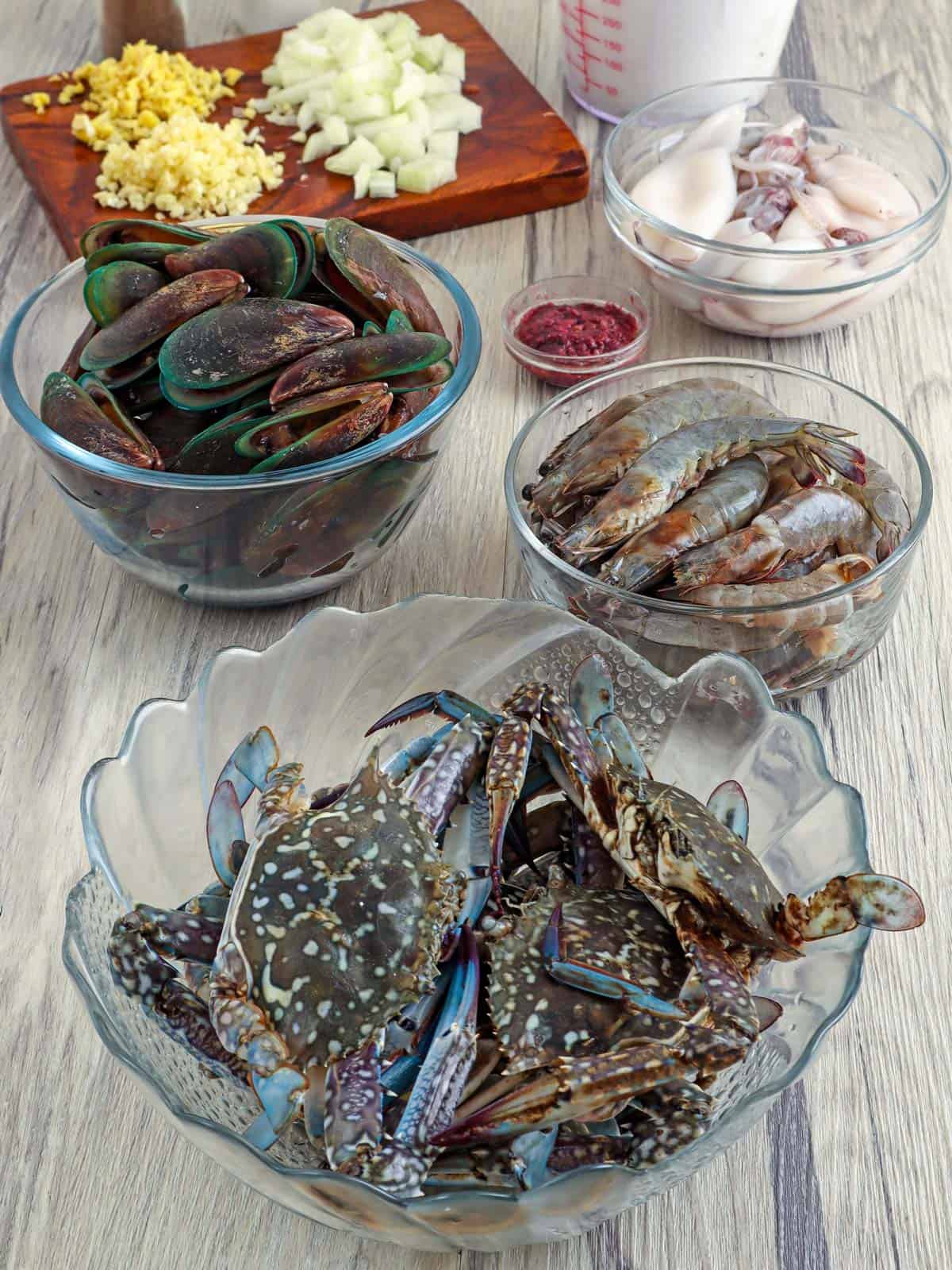
If you're looking for the perfect centerpiece for holiday celebrations, boodle fights, or Sunday lunches, this recipe needs to be on your menu. It takes a bit of work and is relatively expensive, but definitely worth it!
With a plethora of shrimp, squid, crab, and mussels in a rich coconut sauce, it's every seafood lover's dream!
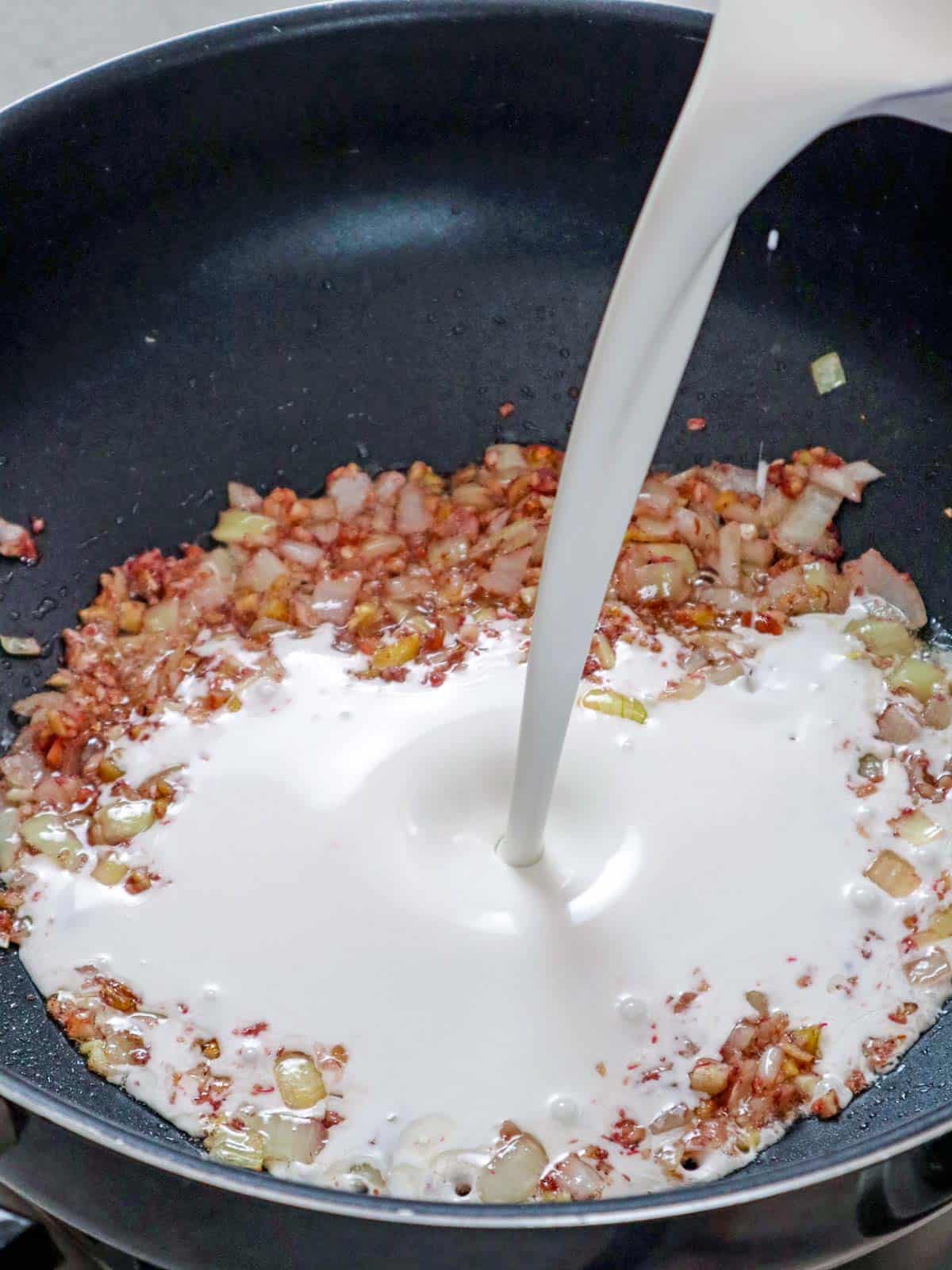
How to clean squid
Make sure to clean the squid properly to keep their ink from darkening the coconut sauce.
- Holding the squid firmly, pull the head from the body, including internal parts and tentacles. Pull out the clear cartilage inside the tube and discard.
- Cut the head and ink sack from the tentacles with a knife. Set aside the tentacles. Peel the spotted outer membrane from the squid and discard
- Under cold running water, wash the tentacles and the tubes inside and outside to remove any remaining tissue or debris. Drain well and pat dry.
How to prepare crabs
- Use a brush to scrub the shell of any debris.
- You can cook the crabs whole for presentation or cut the crabs to extend servings.

How to prepare the mussels
- Soak the mussels in a bowl of cold water. Use a brush to scrub the shell of any debris or mud spots.
- To remove the beard, grab with your thumb and forefinger and tug towards the hinge of the shell. Or use a knife to scrape it away.
- Pick through the mussels and discard "dead ones." The shells of mussels should be closed tightly. Gently tap opened mussels on the kitchen counter. They should close up immediately. If they don't, discard them.
How to prepare shrimp
- Using scissors, trim off the tendrils.
- To devein, insert a toothpick at the base of the shrimp through the shell and pull the black intestinal tract.
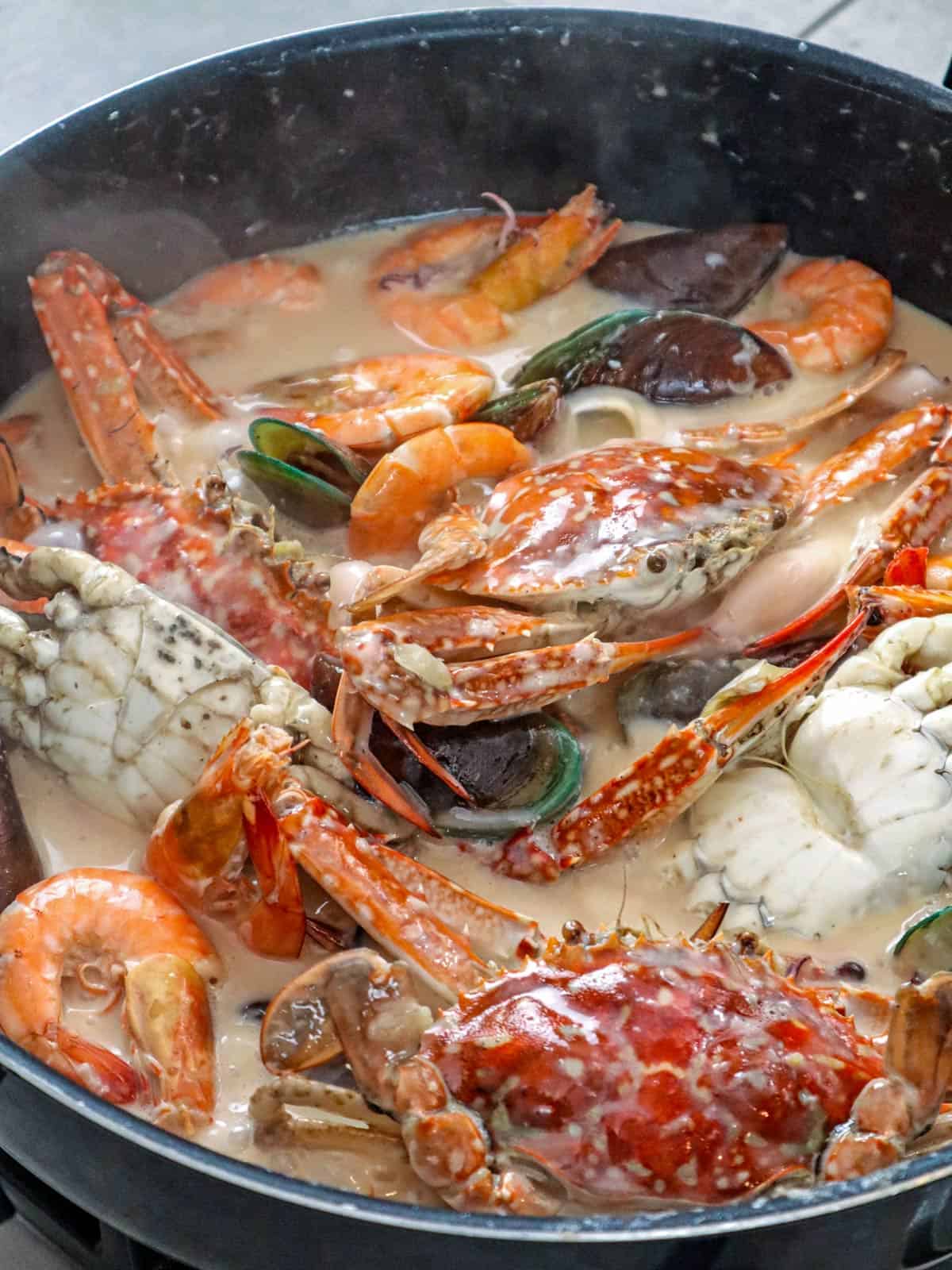
Helpful tips
- The recipe calls for shrimp paste to add umami flavor. You can also use fish sauce.
- To add a kick of spice, add a few pieces of finger chili peppers according to the level of heat desired.
- To keep from overcooking, cook the coconut cream until reduced and begins to curdle before adding the seafood.
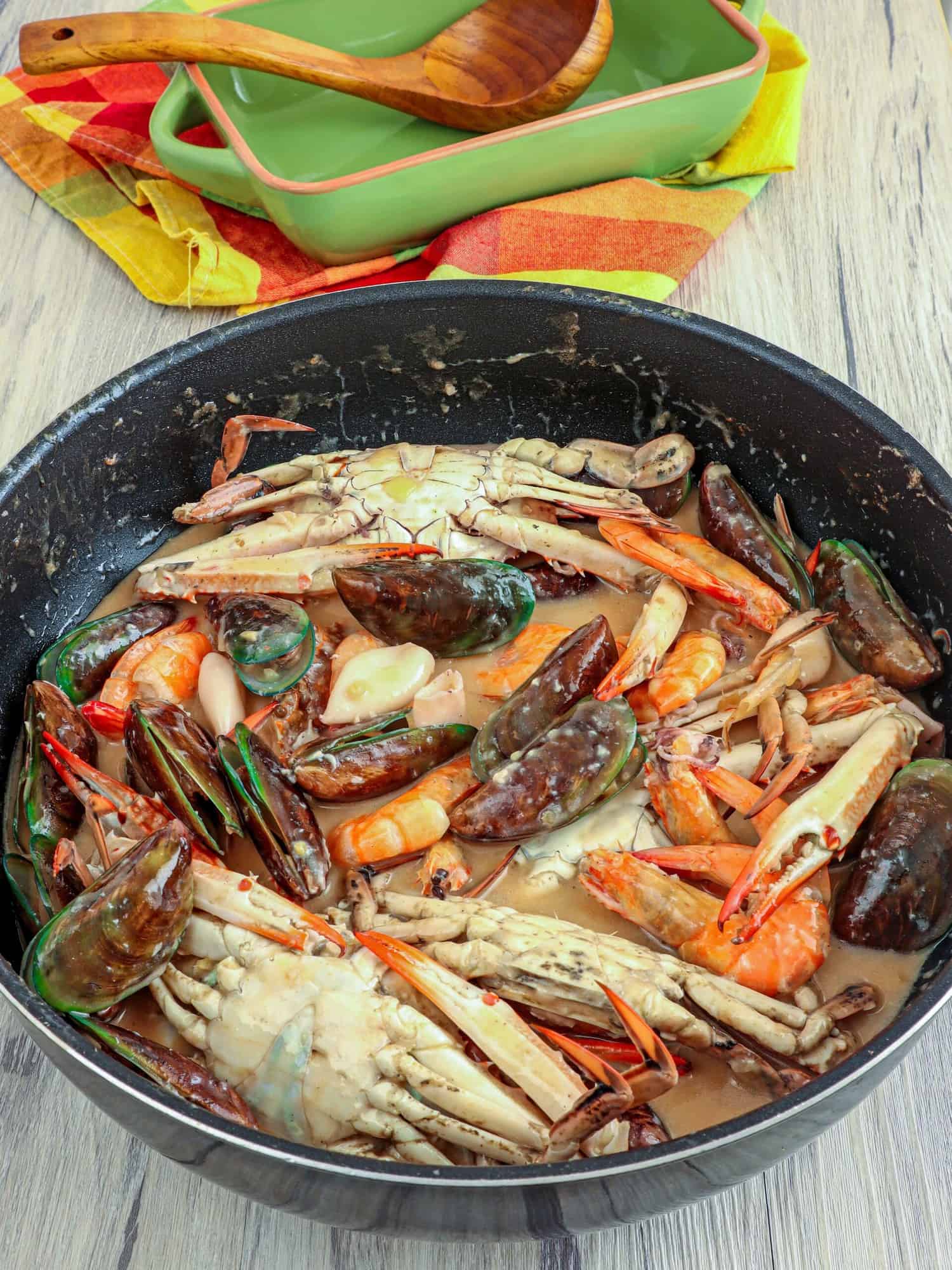
Serving suggestions
- Serve ginataang seafood with steamed rice for lunch or dinner meal. It's also great for special occasions or boodle parties.
- I usually enjoy this dish kamayan-style, but feel free to provide crab crackers and picks to make breaking the shells easier and getting to the delicious flesh.

How to store
- Do not keep it at room temperature for more than two hours for food safety. It contains coconut milk and will spoil pretty quickly outside refrigeration, especially during warmer weather.
- If you happen to have leftovers, store in a container with a tight-fitting lid and keep in the refrigerator for up to 3 days.
- Warm up in the microwave at 2 to 3-minute intervals until completely heated through.
In the mood for more ginataang recipes? Try my shrimp or crab version!
More seafood recipes
Ingredients
- 2 pounds squid
- 2 pounds (about 4 to 5 pieces) crab
- 2 pounds mussels
- 1 pound shrimp
- 1 tablespoon canola oil
- 1 onion, peeled and chopped
- 5 cloves garlic, peeled and minced
- 1 thumb-size ginger, peeled and minced
- 1 tablespoon shrimp paste
- 6 cups coconut cream (kakang gata)
- salt and pepper to taste
Instructions
- Holding the squid firmly, pull the head from the body including internal parts and tentacles. Pull out the clear cartilage inside the tube and discard. With a knife, cut the head and the ink sack from the tentacles. Set aside the tentacles. Peel the spotted outer membrane from the squid and discard.
- Under cold running water, wash the tentacles and the tubes inside and outside to remove any remaining tissue or debris. Drain well. Depending on size, cut squid into halves.
- Under cold running water, wash crabs well. Scrub shells with a kitchen brush to rid of dirt and grime. Rinse and drain well.
- In a large bowl of water, soak mussels for about 15 to 20 minutes. Rinse under cold running water to remove any dirt or grime on outer shells. Hold the beard (the brown thread sticking out between the shells) and pull it out towards the hinge end of the mussel. Rinse and drain well.
- With scissors or knife, trim tendrils from shrimps. Insert a toothpick at the base of the shrimp through the shell and pull the black intestinal tract. Rinse and drain well.
- In a large pot over medium heat, heat oil. Add onions, garlic, and ginger and cook until softened.
- Add shrimp paste and cook, stirring regularly, until lightly browned.
- Add coconut cream and bring to a boil. Cook for about 10 to 15 minutes or until reduced and begins to curdle.
- Add crab and cook until color changes.
- Add mussels and cook until shells open.
- Add shrimps and squid and cook until color changes to pink.
- Continue to cook until sauce has thickened and reduced, clinging onto seafood.
- Season with salt and pepper to taste. Serve hot.
Notes
- To add a kick of spice, add a few pieces of finger chili peppers to taste.
- To keep from overcooking, cook the coconut cream until reduced and begins to curdle before adding the seafood.
Video

Nutrition Information
“This website provides approximate nutrition information for convenience and as a courtesy only. Nutrition data is gathered primarily from the USDA Food Composition Database, whenever available, or otherwise other online calculators.”

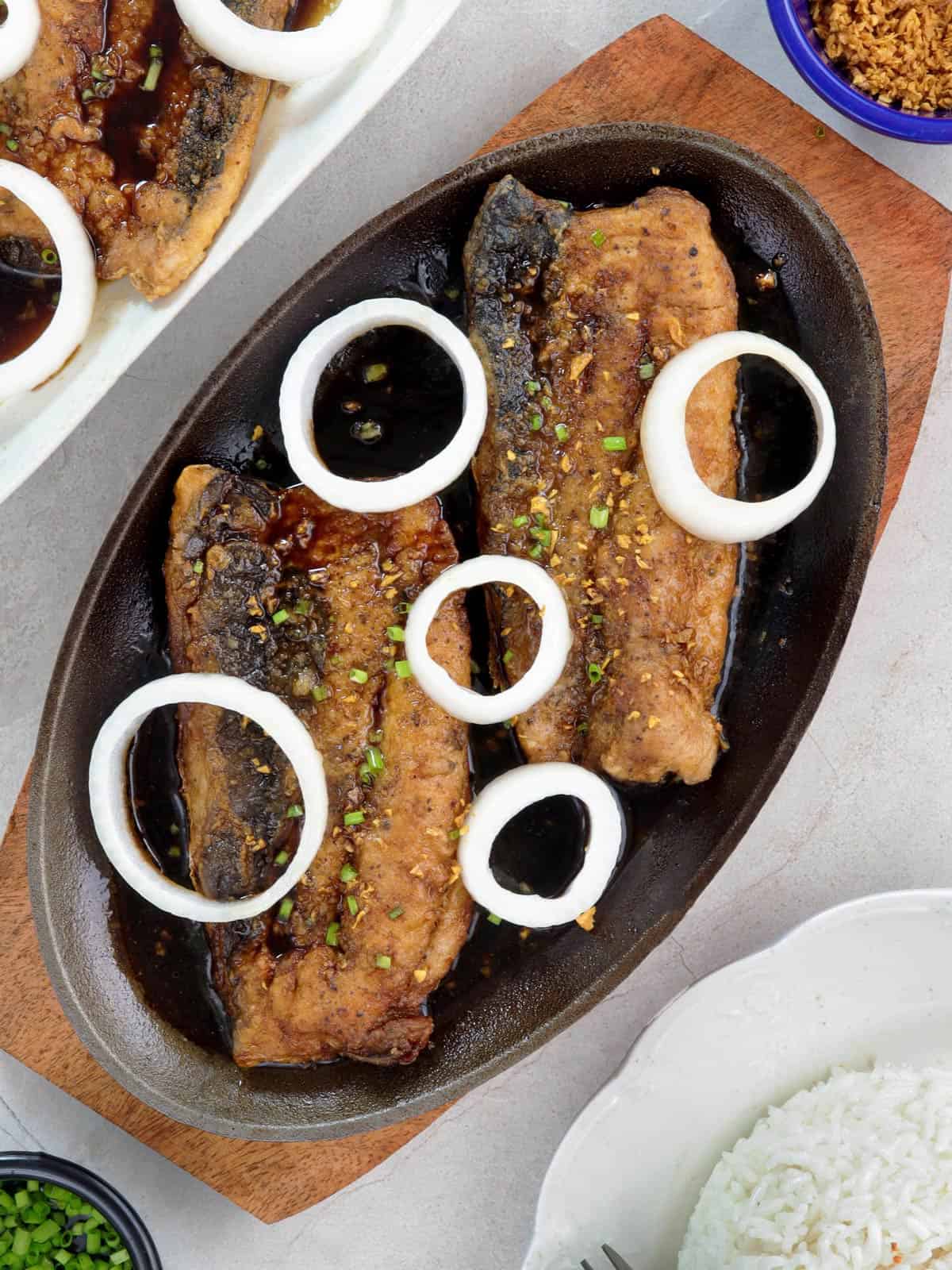

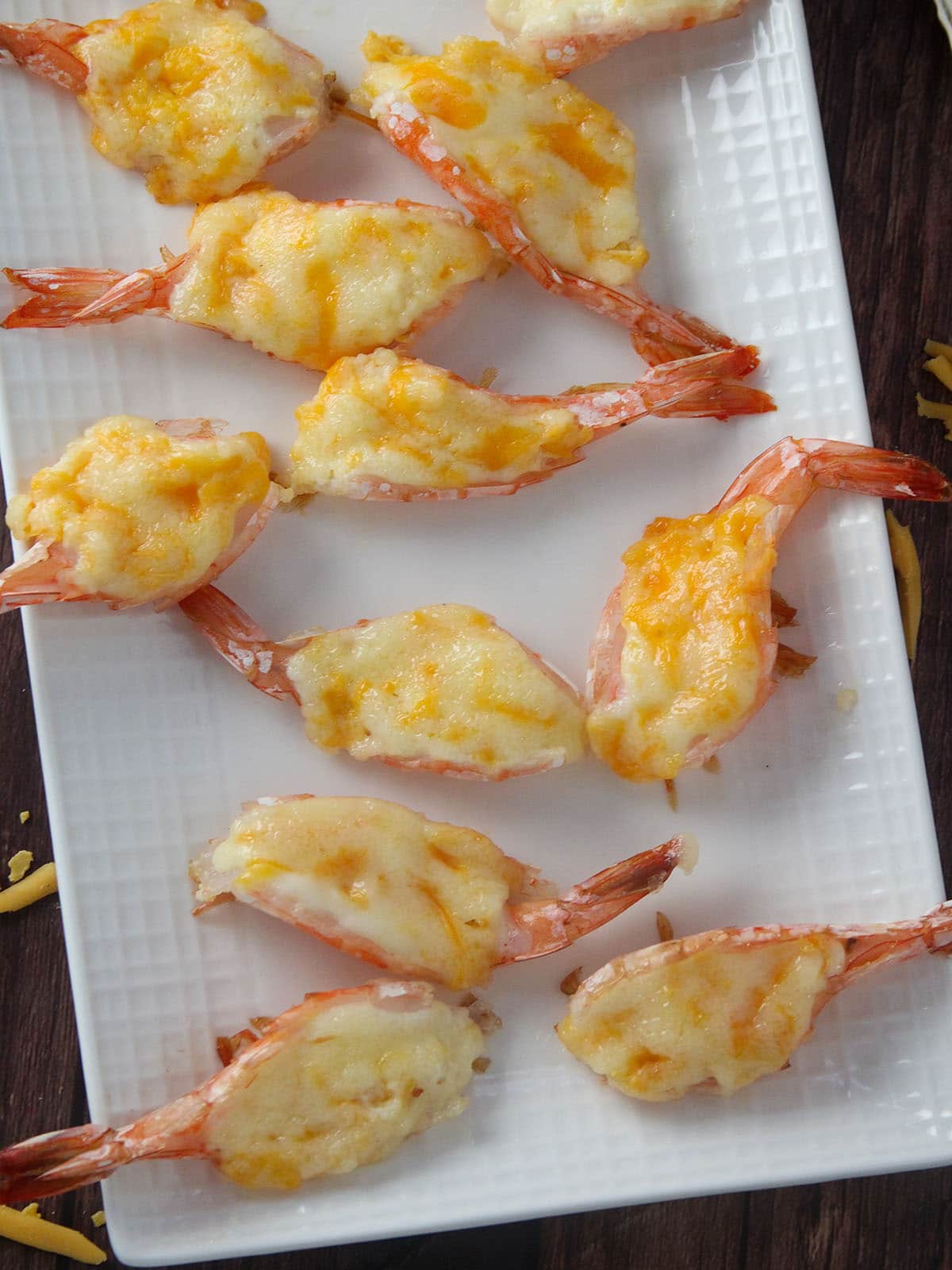
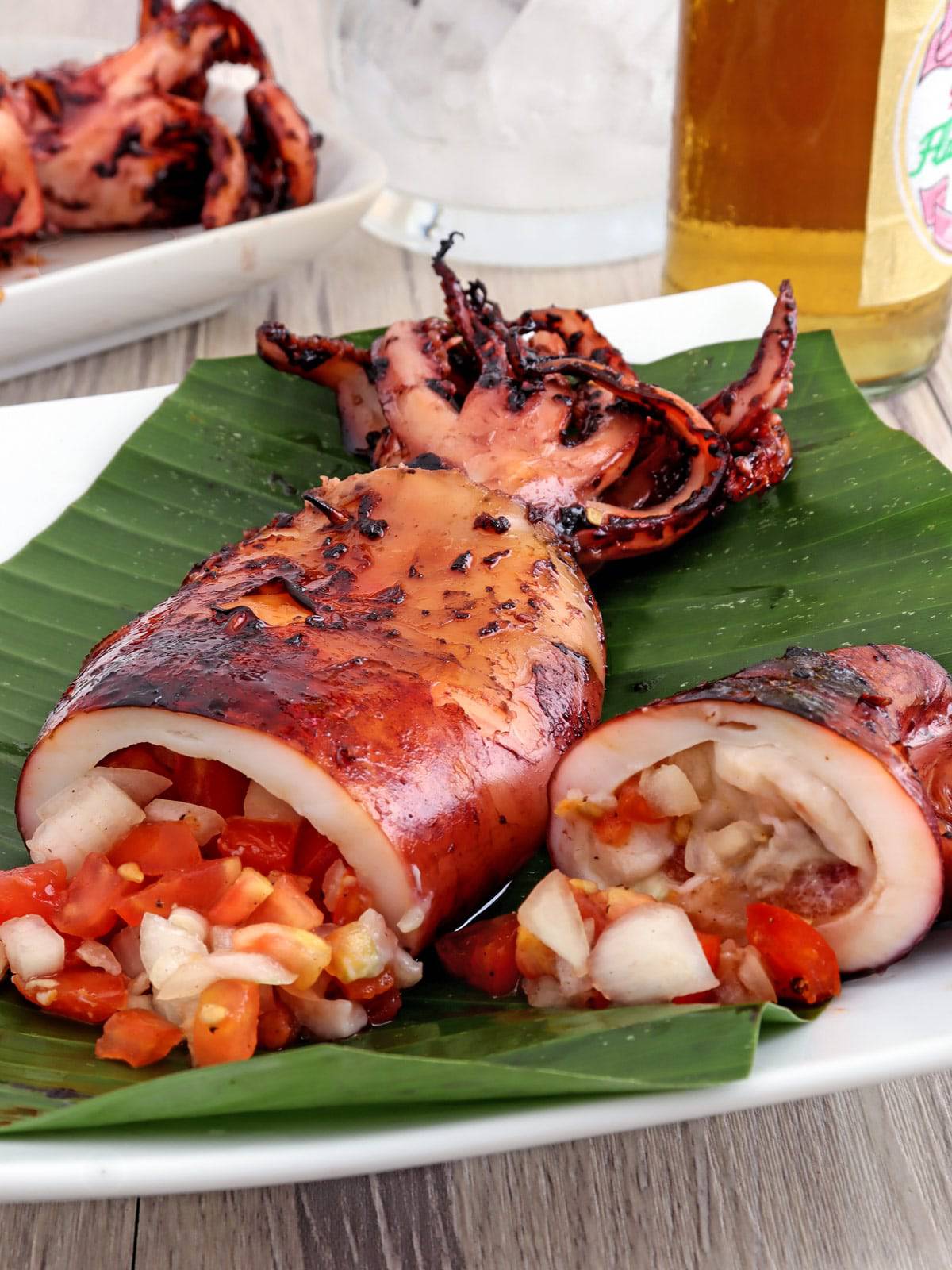
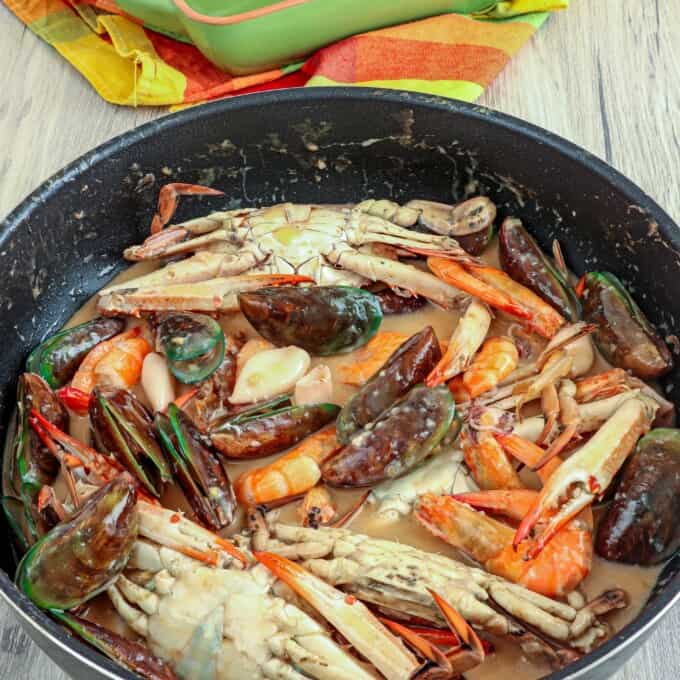
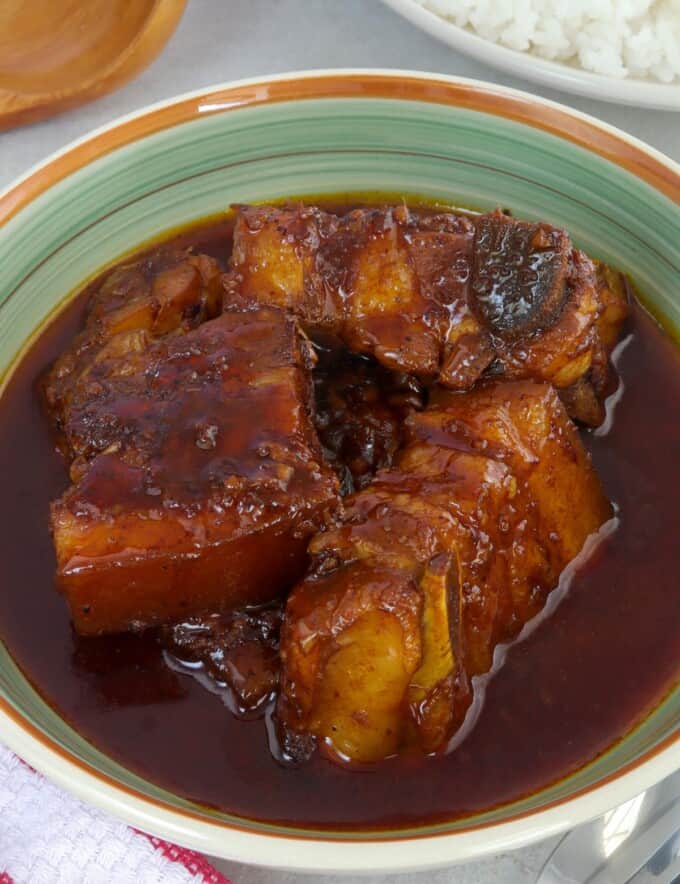
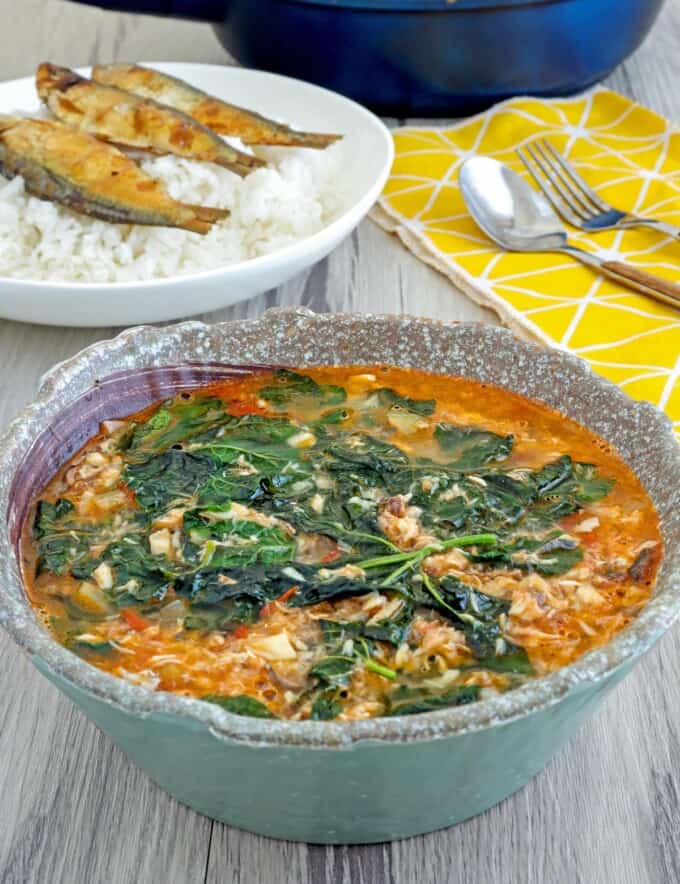
castor says
I think this recipe will make me a teenager. from 79 to 20 yrs. old halacha.
Fran says
Hi! I loved your recipes. You mentioned this recipe has a touch of spice in it. I wonder where can it come from? I didn’t see any other spice except for the regular sautéed garlic onion and ginger. Does the bagoong needs to be spicy?
Lalaine Manalo says
I'm sorry; I missed the chili pepper that you can add if you like.
Leah says
Hi, you mentioned tibok-tibok in this post. I know you have a maja blanca recipe but for me that's not the same as tibok-tibok. I hope you will find the time to post a recipe for the original kapampangan tibok-tibok. The kind that is snow white and very refreshing to eat, not rich or chewy. Thanks in advance.
Lalaine says
Hi Leah,
MY Aunt taught me how to make it but I have a problem making it here in the U.S. because I don't have access to carabao's milk. That is what makes it different from maja blanca which is made of coconut milk. I did try using homogenized milk and added a touch of salt to the mixture to mimic taste of fresh carabao's milk. The result, unfortunately, was not spot on but pretty close.
Leah Croucher says
Thanks for your reply, Lalaine. You're right about carabao milk being a flavor all its own. But to get that texture, do you have to strain the rice flour through cheese cloth?
Tricia says
This recipe sounds delicious but I can't help notice that it calls for coconut cream rather than milk. Is there a difference?
Lalaine says
Hello Tricia
Coconut cream is the first extraction (kakang gata we call in the Philippines), it is richer and creamier than the coconut milk which is usually the second or third extraction. However, the brand I use, Mae Ploy, is labeled "coconut milk" but is thicker than other brands of coconut milk.
ROCHELLE says
Hi Ms. Lalaine 🙂 Thanks for sharing the recipe...will definitely try it. One of my fave food that I can't resist.
Lalaine says
Hello Rochelle
Don't resist, give in to all that rich and creamy deliciousness 🙂
Dinah says
I have missed eating this! Will sure to try this during the weekends 🙂
Mia says
Goodness, this looks delicious! I won't say NO to any seafood dish especially with coconut milk. Glad you enjoyed your vacation in Philippines!
Carmen Socorro E. Ayende says
Oh, boy! I'm salivating at the delightfully decadent sight of your seafood dish. But the tedious preparation of the catch of sea creatures will surely keep me from attempting to try cooking it. However, since I'm blessed with a husband who's way better and a lot patient than me in the kitchen, I'll definitely ask him to cook it for our weekend special! By the way, your website is such a good find for timeless, nourishing and comforting Filipino food.
Lalaine says
Hello Carmen
Oh please, please try this. It's so rich and sinful and absolutely delicious. A man good in the kitchen is always a good find. 🙂
Thank you for your kind feedback, I am glad you are finding my recipes useful in your homecooking.